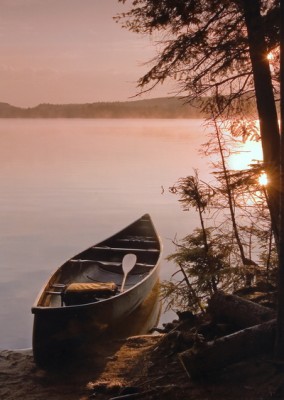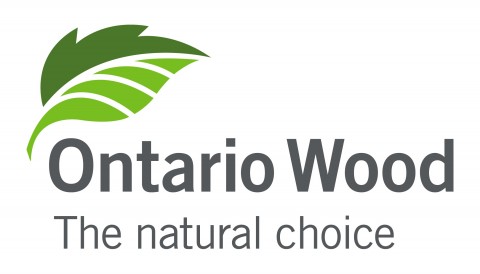Wooden canoes and paddles are closely linked to Ontarians’ collective sense of history. For centuries, rivers and lakes were the railways of their time: traversing our waterways by canoe was how Indigenous people and early European settlers explored this vast country.
Ontario is known as the “canoe capital” of the world for good reason. Our endless lake and river routes run from the far north of the province to the U.S. border.
A long history of craftsmanship
For thousands of years, the province’s Indigenous peoples have created birch-bark canoes from birch and white cedar trees. The tough, waterproof qualities of the bark, overlaid on a white cedar hull, resulted in a strong, long-lasting boat.
 By the late 1800s, a new kind of wooden canoe became the dominant form, according to Jeremy Ward, curator of the Canadian Canoe Museum in Peterborough. These canoes were created using two kinds of Ontario wood: eastern white cedar and white ash.
By the late 1800s, a new kind of wooden canoe became the dominant form, according to Jeremy Ward, curator of the Canadian Canoe Museum in Peterborough. These canoes were created using two kinds of Ontario wood: eastern white cedar and white ash.
“White cedar has been a choice wood for canoe manufacturing for a long time,” notes Jeremy. “It’s beautiful and its rot resistance is great. Plus, it’s got kind of a limber or almost rubbery quality when heat and steam are applied to it. That makes it really great to work with.” Cherry, black cherry and figured maple were sometimes used for the trim on these canoes.
The art of wooden canoe-making today
 Today, the traditional art of making wooden canoes and paddles is carried on by dozens of canoe and paddle makers in Ontario. Peter Code is one of those craftspersons. Peter owns Lakeview Canoe in Mississauga. He builds new canoes and repairs old ones.
Today, the traditional art of making wooden canoes and paddles is carried on by dozens of canoe and paddle makers in Ontario. Peter Code is one of those craftspersons. Peter owns Lakeview Canoe in Mississauga. He builds new canoes and repairs old ones.
Peter crafts his boats using a combination of classic techniques and more modern materials. “I make my new canoes out of Ontario white cedar and Ontario white ash, as well as fibreglass cloth and epoxy resin, instead of the traditional canvas-covered canoes, because it’s more durable.” He uses white cedar to build most parts of the boat, and white ash for a few parts, such as the gunwale, seats, keel and stems.

Paddling a wooden canoe is a very different experience than paddling one manufactured from more contemporary materials like fibreglass or aluminum, says Peter. “When you’re out on the water in a nice wooden canoe, other paddlers will often stop you and say, ‘Wow, what a great canoe.’ Wooden boats resonate differently, they feel different when you’re paddling them. And they connect you to our country’s history in a fundamental way.”
Crafting paddles
 Custom-made wooden paddles are also a key part of the canoeing experience. Audrey Shelton and her husband Russell, owners of Teal Paddles in New Liskeard, specialize in one-piece solid wood paddles crafted mainly from Ontario ash, birch and cherry. They source the wood locally, and then saw, kiln dry and craft the paddles in their workshop.
Custom-made wooden paddles are also a key part of the canoeing experience. Audrey Shelton and her husband Russell, owners of Teal Paddles in New Liskeard, specialize in one-piece solid wood paddles crafted mainly from Ontario ash, birch and cherry. They source the wood locally, and then saw, kiln dry and craft the paddles in their workshop.
One-piece paddles are built to last, says Audrey. “Most paddles are laminated wood that is glued together. But glue has a short lifespan, so the paddles fall apart more easily. Our solid-wood paddles can easily last 20 or 30 years, even with heavy use.” Teal Paddles supplies outfitters across the province, and ships its paddles to buyers in the United States and other countries.
Ontario Wood
 Both Peter Code and Audrey and Russell Shelton are part of the Ontario Wood program. Ontario Wood encourages Ontarians to buy wood and wood products that are sourced from Ontario. It also generates broader public awareness about the variety of Ontario wood products available in the province, and the benefits of buying local.
Both Peter Code and Audrey and Russell Shelton are part of the Ontario Wood program. Ontario Wood encourages Ontarians to buy wood and wood products that are sourced from Ontario. It also generates broader public awareness about the variety of Ontario wood products available in the province, and the benefits of buying local.
